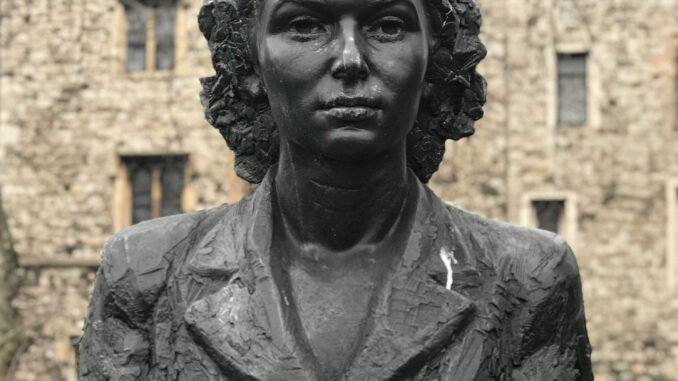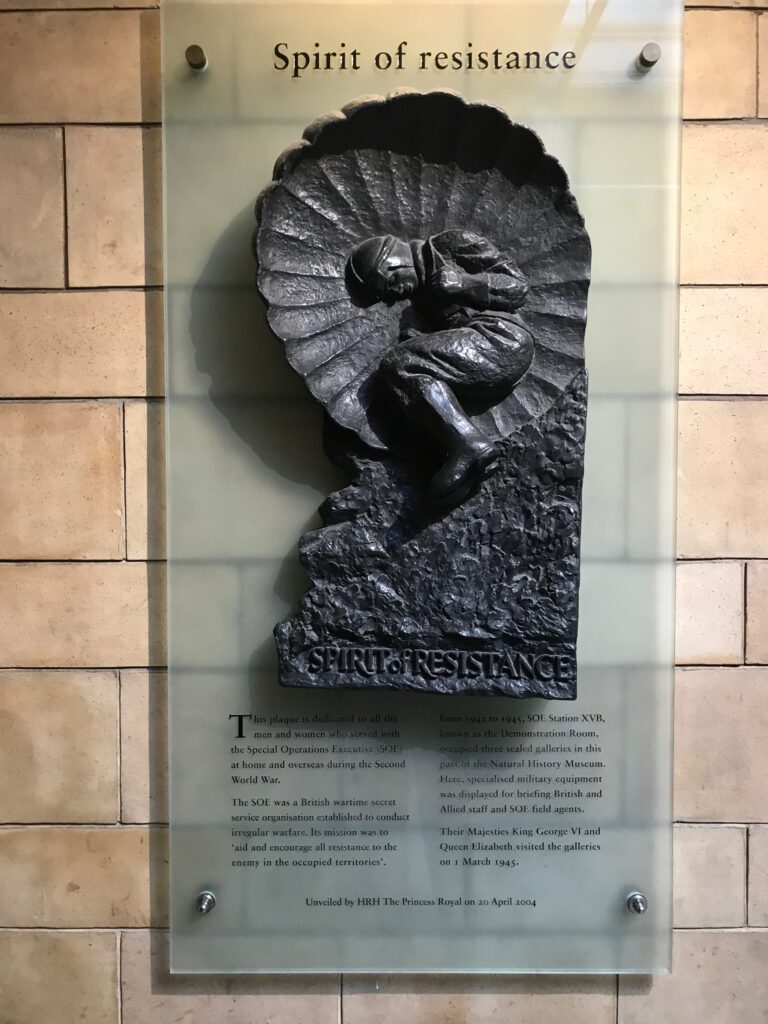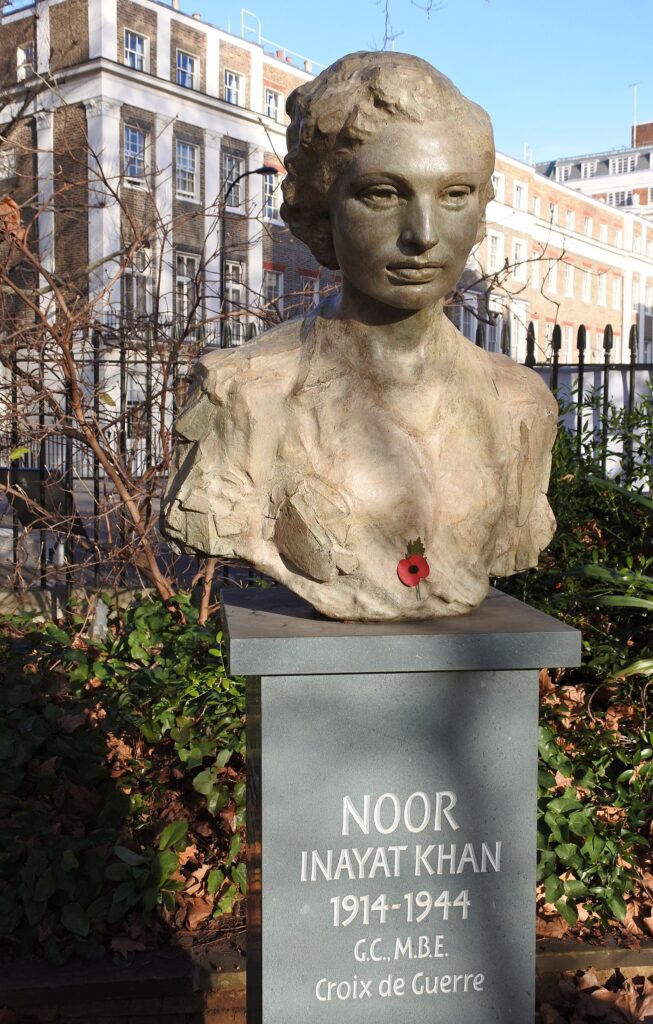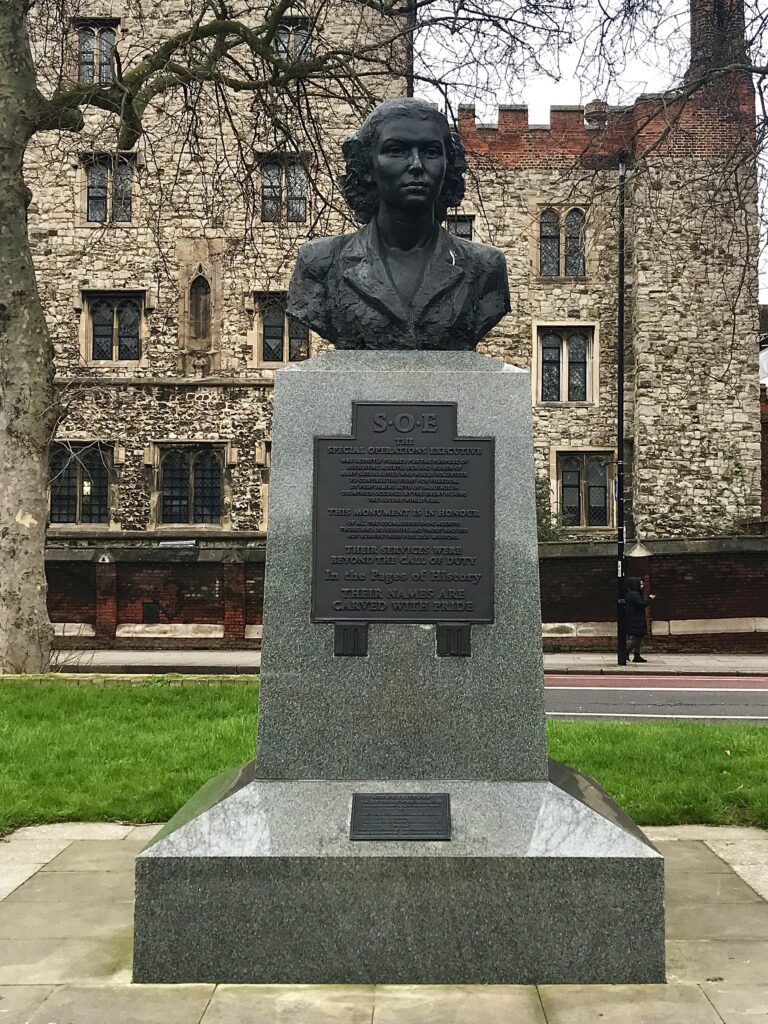
Many of the stories of those who served in WW2 are capable of inducing in those of us who have never had to face such experiences a state of awe: the unimaginable horror, always the risk of death, the loss of friends and comrades. How did they endure? What reserves did they draw on to survive?
And standing out among the brave are those who worked in enemy territory, who had to live with the constant threat of betrayal and arrest, who knew that capture almost certainly meant torture and death.
Some of these exceptional individuals – men and women – are recognised with the memorial by the river on the Albert Embankment, just over the road from Lambeth Palace. Unveiled in 2009, this is the commemoration of the SOE, the Special Operations Executive, whose role was, in Churchill’s words, to “set Europe ablaze”.
Landed by small aircraft, or from submarines, or dropped into occupied territory by parachute, they liaised with local resistance or partisan units, conducted acts of sabotage, couriered messages between groups, or used transmitters to send back information to London. The risks were huge and obvious, their courage unbelievable.
And what is striking is how often these agents were such ordinary people, who might have lived out lives of suburban blandness had it not been for the war.
Take the woman whose sculpture adorns the memorial. This is Violet Szabo, daughter of an English soldier and French seamstress, who was a shop assistant in Brixton’s ‘Bon Marche’ in 1939. She married a Free French officer, with whom she had a daughter in June 1942. Her husband was killed in the October of that year, after which Violet was recruited to SOE and, after training, landed in France in April 1944.
She returned to France for a second mission, parachuting in just two days after D Day on 8 June 1944, but on this mission things swiftly unravelled. She was captured on 10 June, interrogated and then sent to the Ravensbruck concentration camp where she and two other female SOE agents were executed on 5 February 1945. She was just 23 years old. Her story was told in the 1958 film ‘Carve her name with pride’ that starred Virginia McKenna.
The sculpture of Szabo is by the artist Karen Newman, who also did the memorial in Gordon Square to Noor Inayat Khan. She was the first female agent to serve as an undercover radio operator in occupied France in June 1943. She was arrested in the October of that year and after interrogation (and a failed escape) was held prisoner in abject conditions for ten months before being sent to Dachau, where she and three other female SOE agents were executed on the morning of 13 September 1944. Both she and Szabo were posthumously awarded the George Cross, the highest civilian award for bravery in the UK, as well as France’s Croix de Guerre.
There are other memorials to the SOE in London: one in the Cloister of Westminster Abbey, and another in, of all places, the Natural History Museum, several galleries of which were used during the war as a workshop and demonstration room.



![]() As you can imagine, there are numerous books on the SOE, many of which are by the organisation’s official historian M R D Foot (you can see them here); his short history is here. The stories of all 40 of the female SOE agents in France are to be found here. Szabo’s daughter Tania wrote a biography of her mother and there are a couple of biographies of Khan on Amazon.
As you can imagine, there are numerous books on the SOE, many of which are by the organisation’s official historian M R D Foot (you can see them here); his short history is here. The stories of all 40 of the female SOE agents in France are to be found here. Szabo’s daughter Tania wrote a biography of her mother and there are a couple of biographies of Khan on Amazon.
